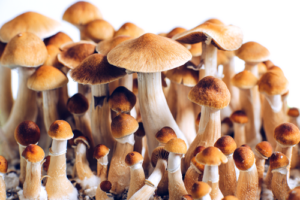
GalaxyTerpenes
In the diverse landscape of cannabis, two primary classifications—Indica and Sativa—define the characteristics and effects of various strains. Understanding the distinctions between these two types is crucial for individuals seeking specific experiences and benefits from cannabis consumption. Here we’ll break down the differences between Indica vs Sativa strains, helping you navigate the vast world of cannabis with confidence.
Indica vs. Sativa: Origins and Appearance
Indica: The Relaxing Indulgence
Origins: Indica strains are believed to originate from the mountainous regions of Afghanistan, Pakistan, and India. These plants adapted to harsh climates and developed characteristics that make them well-suited for colder, high-altitude environments.
Appearance: Indica plants are generally shorter and bushier compared to Sativa. They have broader leaves and tend to be darker in color.
Sativa: The Uplifting Elevation
Origins: Sativa strains are thought to have originated in equatorial regions such as Southeast Asia, Central and South America, and Africa. These plants adapted to warmer climates and developed characteristics conducive to thriving in tropical environments.
Appearance: Sativa plants are typically taller and more slender, with narrow leaves. They often have a lighter shade of green.
Effects and Sensations: Indica vs. Sativa
Indica: The “In-Da-Couch” Experience
- Effects: Indica strains are commonly associated with relaxing and sedative effects. Users often experience a calming body high that can help with relaxation, pain relief, and sleep. Indica strains are often chosen for evening or nighttime use.
- Sensations: Indica strains are known for inducing a sense of calmness and tranquility. Users may feel a heavy, “body-melting” sensation that is conducive to winding down.
- Effects: Sativa strains are renowned for their energizing and uplifting effects. They can enhance creativity, focus, and sociability. Sativa strains are often preferred for daytime use to promote productivity and engagement.
- Sensations: Sativa strains tend to produce a cerebral high, offering users a more invigorating experience. The effects are often described as uplifting, euphoric, and mentally stimulating.
Cannabinoid and Terpene Profiles: Indica vs. Sativa
Indica: High in Relaxing Compounds
- Cannabinoid Profile: Indica strains often have higher levels of CBD (cannabidiol) and lower levels of THC (tetrahydrocannabinol), resulting in a more balanced and mellow experience.
- Terpene Profile: Common terpenes found in Indica strains include Myrcene, which is associated with sedative effects, and beta-Caryophyllene, known for its anti-inflammatory properties.
Sativa: Elevation with THC Dominance
- Cannabinoid Profile: Sativa strains tend to have higher levels of THC, the psychoactive compound responsible for the euphoric “high” associated with cannabis.
- Terpene Profile: Sativa strains often contain terpenes like limonene, which contributes to a citrusy aroma and is believed to have mood-boosting properties.
In addition to pure Indica and Sativa strains, many cultivators produce Hybrid strains that combine characteristics of both. These hybrids aim to offer a balanced experience, catering to a wide range of preferences and needs.
Conclusion: Tailoring Your Cannabis Experience
Understanding the differences between Indica and Sativa strains allows consumers to tailor their cannabis experience to their desired outcomes. Whether seeking relaxation, creativity, or a balance of effects, the diverse world of cannabis provides options for every individual preference. As legalization and acceptance of cannabis continue to grow, consumers can navigate dispensaries with confidence, armed with knowledge about the nuances between Hybrid, Indica, and Sativa strains.



